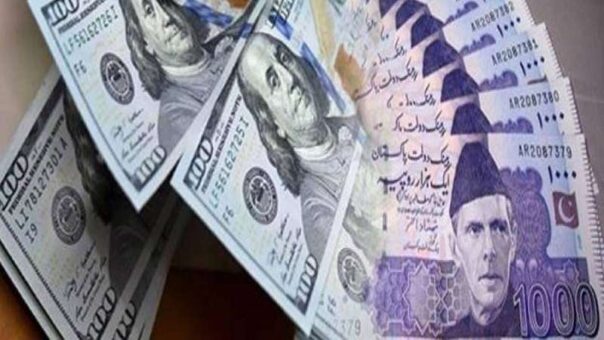Karachi, November 3, 2023 – The Pakistani Rupee (PKR) continued its downward trend, concluding its 10th consecutive falling session at PKR 284.31 against the US dollar on Friday.
Over the span of these ten sessions, the rupee has depreciated by approximately PKR 5.52, marking a significant 1.98 percent decline since its closing rate of PKR 278.79 on October 20, 2023. The consistent depreciation of the rupee has triggered concerns among financial experts and analysts who have identified several key factors contributing to this unsettling trend.
On a day-to-day basis, the rupee weakened by PKR 0.88 from the previous day’s closing rate of PKR 283.42 against the dollar in the interbank foreign exchange market.
One of the primary factors behind the rupee’s depreciation is the depleting foreign exchange reserves of Pakistan. According to a report released by the State Bank of Pakistan (SBP), the country’s foreign exchange reserves witnessed a significant decrease of $78 million in just one week. By the week ending October 27, 2023, Pakistan’s foreign exchange reserves had fallen to $12.577 billion, down from $12.655 billion the previous week, which ended on October 20, 2023. This decline marks a significant shift from the peak level of foreign exchange reserves, recorded in August 2021 when they reached a robust $27.2 billion.
Another significant factor contributing to the rupee’s depreciation is the rising demand for imports. The recent economic recovery and increased import activities have placed considerable pressure on the rupee. As businesses expand and the economy rebounds, the need for foreign currency to finance imports has surged, resulting in heightened demand for the US dollar.
The continuous depreciation of the Pakistani Rupee against the US Dollar necessitates close monitoring by authorities and the development of strategies to stabilize the currency. A weaker currency can have wide-ranging implications, impacting the cost of imports, inflation rates, and the overall economic well-being of the nation. For businesses engaged in international trade, fluctuations in exchange rates can significantly affect their profitability and competitiveness in the global market.
One pressing issue that demands attention is Pakistan’s balance of payments. A persistent trade deficit could further strain foreign exchange reserves and the overall financial stability of Pakistan. To address these challenges, both the government and the central bank may need to consider implementing monetary and fiscal policies.
In conclusion, the sustained depreciation of the Pakistani Rupee against the US Dollar emphasizes the need to address the root causes of this decline, including the country’s foreign exchange reserves, trade balance, and increased demand for imports. To ensure economic stability, a coordinated effort is required to implement effective policies and strategies that support the currency and maintain the overall financial health of Pakistan. Close collaboration among stakeholders, including the government, central bank, and market participants, is imperative to manage the situation and implement measures that safeguard the value of the rupee and promote financial stability.
